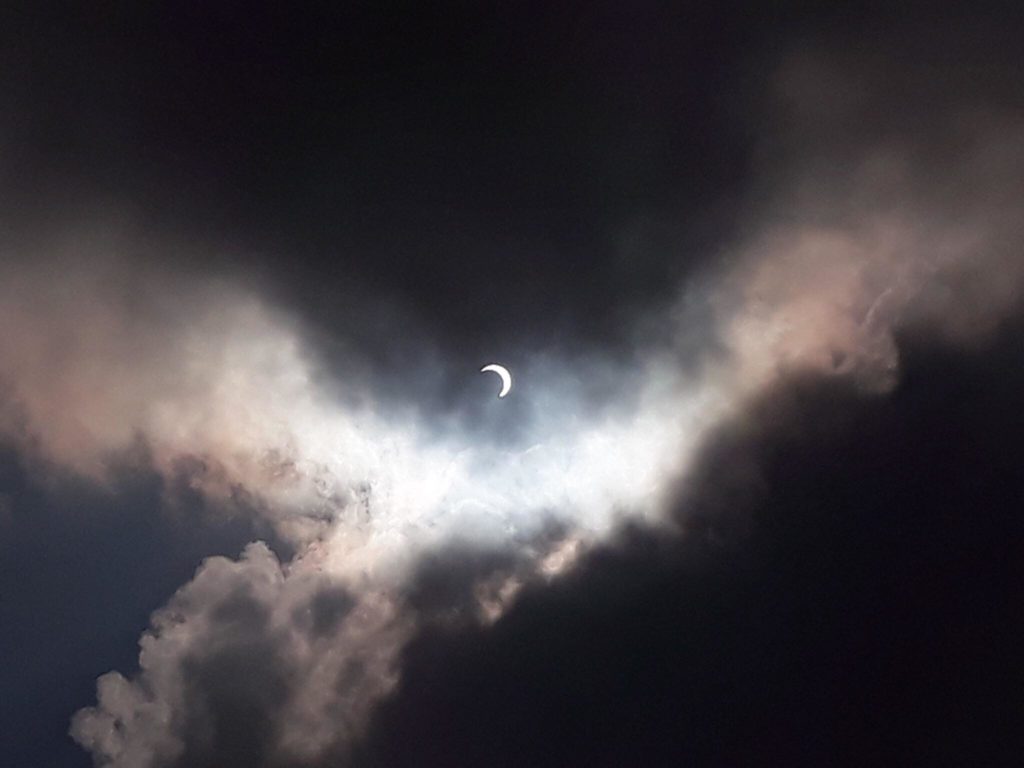
Netizen Oli Lim captures a fascinating view of the annular solar eclipse in Gemsville, Lahug Cebu City on Thursday, December 26, 2019. | Contributed photo
CEBU CITY, Philippines — The Philippine Atmospheric Geophysical and Astronomical Sciences Association in Central Visayas (Pagasa-7) reminded the public that the annular eclipse which was witnessed by many today, December 26, was not a bad sign or a bad omen.
This is in relation to the information circulating in social media that the eclipse brings bad luck or it is a sign that the phenomenon might bring a disastrous event.
According to Weather Specialist Nedz Saletrero of the state weather bureau in a phone interview, that there is no scientific explanation or proof about the phenomenon being a bad omen.
“Kani siya, wa gyud ni scientific explanation ana. Sulti-sulti rana sa mga tawo and way dirikta nga relation sa mga katalagman nga mahitabo . . .sa ato lang observation nga katong ni cover siya nga it is a good chance for us to witness it kay di na nato often makita diri sa Philippines kani nga phenomenon, kaning annular solar eclipse,” she said.
(There is no scientific explanation to back the bad omen claim. That is only loose talk and has no direct relation to the phenomenon. In our observation to those who covered the event it is a good chance for us to witness it because it is a rare phenomenon that can be seen in the Philippines — this annular solar eclipse.)
Saletrero said that the annular eclipse was last seen in the Philippines 75 years ago and would be visible again in 2053.
In Cebu, 82 percent of the annular solar eclipse was seen at 12:40 p.m. and ran until 3:54 p.m.
Its maximum was experienced in Cebu at around 2:20 p.m. to 2:30 p.m.
A solar eclipse is a phenomenon that occurs when the moon is farthest from the Earth.
Due to this, the moon seems smaller and does not block the entire view of the sun, creating a “ring of fire” effect./dbs